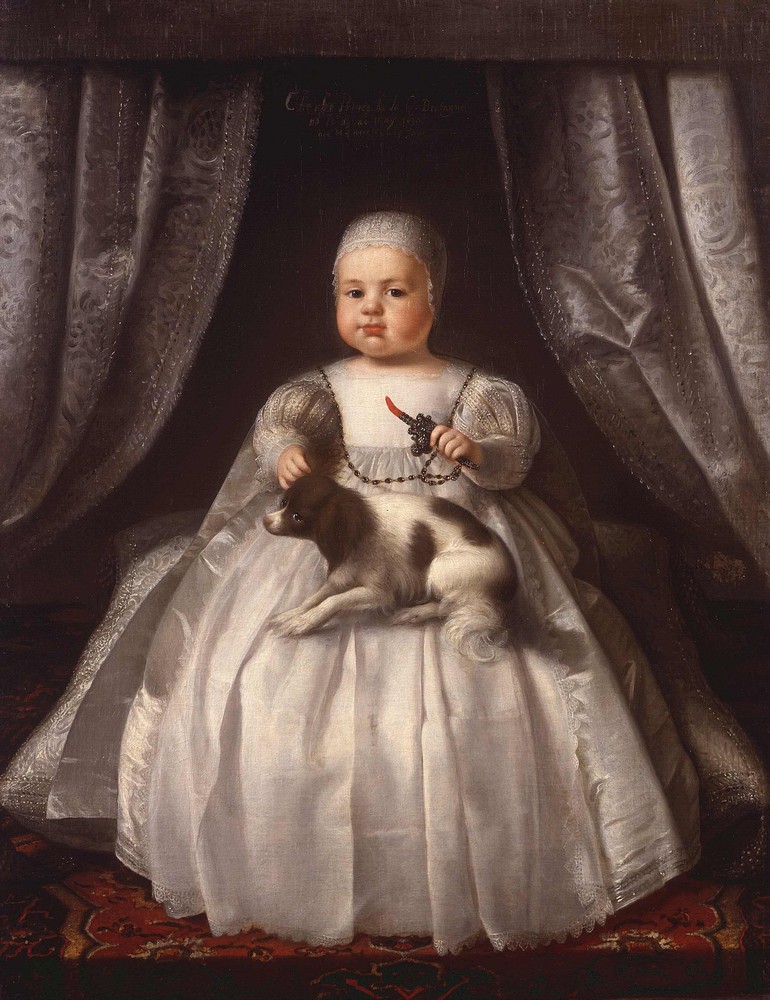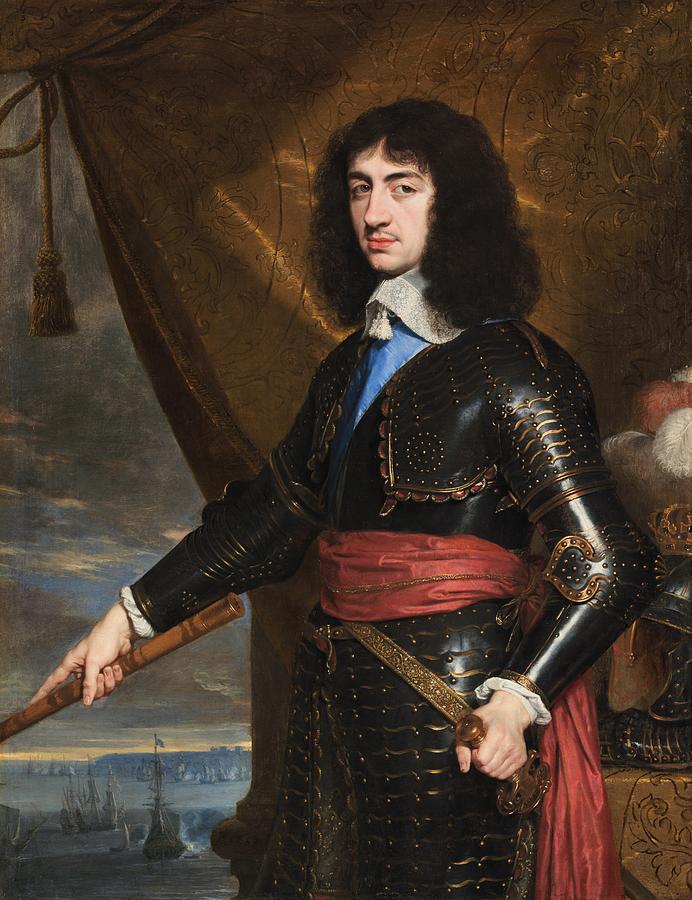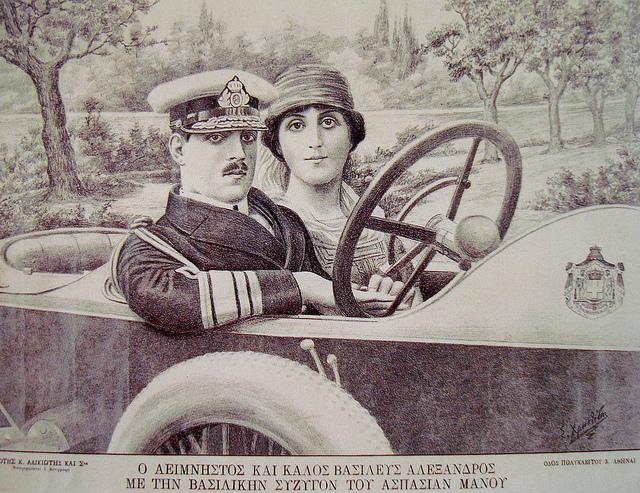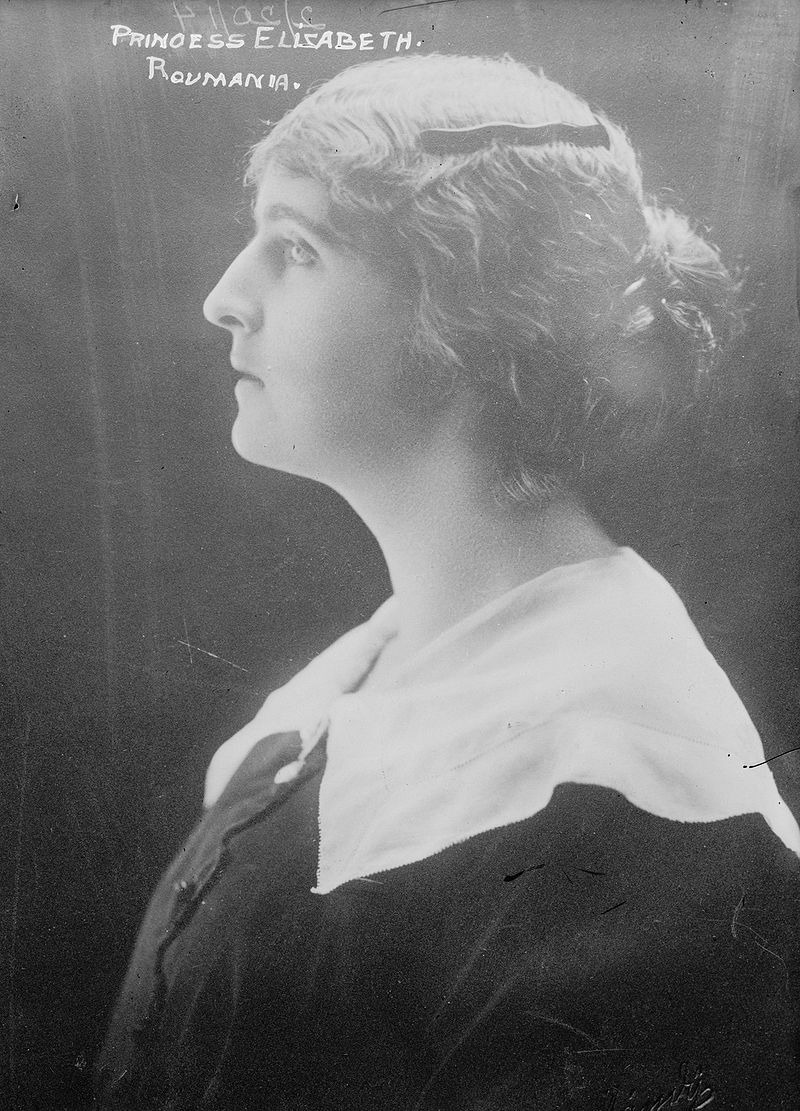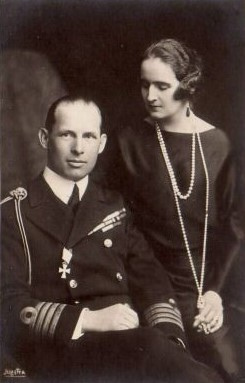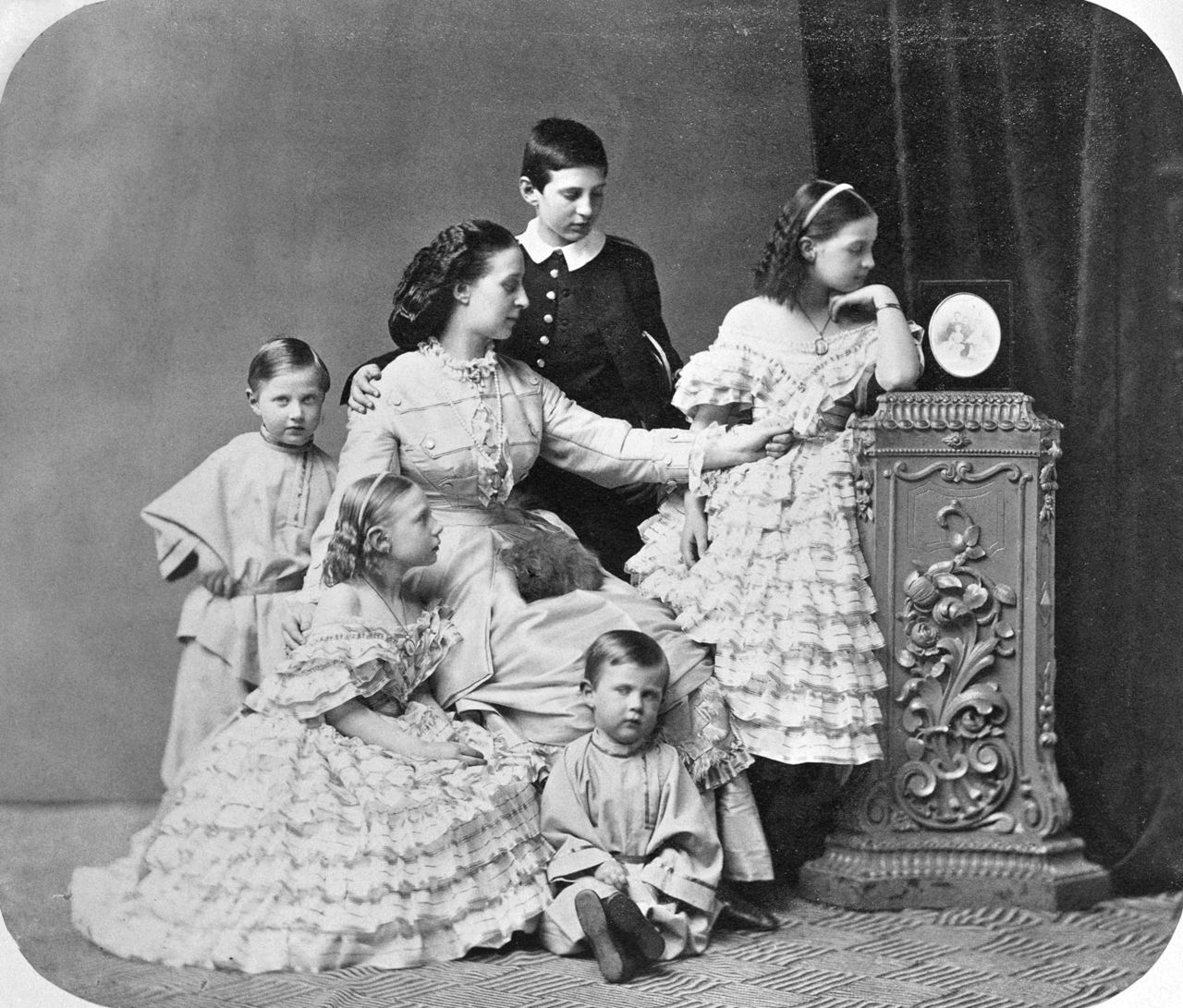by Susan Flantzer © Unofficial Royalty 2016
Anne Hyde, Duchess of York; Credit – Wikipedia
Anne Hyde, the first wife of James, Duke of York, later King James II of England, died before her husband became king. She was born on March 12, 1637, at Cranbourne Lodge in Windsor, England. Her parents were Edward Hyde (later created 1st Earl of Clarendon) and his second wife, Frances Aylesbury, the daughter and heiress of Sir Thomas Aylesbury, 1st Baronet, and his wife Anne Denman.
Anne, who was the eldest child, had five younger siblings:
- Henry Hyde, 2nd Earl of Clarendon (1638 – 1709), married (1) Theodosia Capell, had issue (2) Flower Backhouse, no issue
- Lawrence Hyde, 1st Earl of Rochester (1642 – 1711), married Lady Henrietta Boyle, had issue
- Edward Hyde, died at age 20
- James Hyde, drowned in his 20s
- Frances Hyde, married Thomas Keightley
Anne’s father Edward Hyde was a lawyer and Member of Parliament. At first, Hyde was a moderate critic of King Charles I, but he gradually became more supportive of the king. In 1641, Hyde became an informal adviser to King Charles I. In February 1643, Hyde was knighted and was appointed to the Privy Council. The following month, he was made Chancellor of the Exchequer. In 1649, after the execution of King Charles I, when Anne was 12 years old, her family fled to the Netherlands. They settled in Breda, where they were offered a home by the eldest daughter of King Charles I, Mary, Princess Royal and Princess of Orange, who was known for helping many royalist fugitives from England. In his early years of exile, Hyde played no political role but instead began writing a history of the English Civil War, The History of the Rebellion. In 1651, Hyde became an adviser to the king in exile, Charles II, and soon became his chief adviser. Charles appointed Hyde Lord Chancellor in 1658.

Edward Hyde by Jacob van Reesbroeck, 1649-1653; Credit – Wikipedia
In 1654, Anne Hyde was appointed a maid of honor to Mary, Princess Royal and Princess of Orange, the eldest daughter of King Charles I of England, the widow of Willem II, Prince of Orange and the mother of the young Willem III, Prince of Orange who would marry Anne’s daughter Mary. The couple would eventually co-reign in England as King William III and Queen Mary II. Given the situation, it was natural that Anne should come into contact with members of the exiled English royal family, including King Charles I’s second surviving son, James, Duke of York. Anne was attractive and stylish and attracted many men, including James, Duke of York. On November 24, 1659, in Breda, Anne and James married secretly in front of witnesses.
Contemporaries of Edward Hyde assumed that he had arranged the royal marriage of his daughter, but modern historians generally agree that he played no part. The marriage came as an unwelcome shock to Hyde, and he is supposed to have told his daughter that he would rather see her dead than disgrace her family. Anne Hyde was the first non-royal spouse to marry into the royal family since King Henry VIII‘s marriage to Catherine Parr in 1543. There would not be another non-royal spouse until 1871 when Queen Victoria‘s daughter Princess Louise married John Campbell, Marquess of Lorne and heir to the Dukedom of Argyll.
The monarchy was restored in 1660, and King Charles II and the rest of the royal family returned to England. In the fall of 1660, it was obvious that Anne was pregnant. The royal family was embarrassed, and society viewed the pregnancy as a scandal. The king was consulted, resulting in James and Anne being officially married at Worcester House in London on September 3, 1660, just seven weeks before the birth of their first child.

James and Anne Hyde in the 1660s, by Sir Peter Lely; Credit – Wikipedia
James and Anne had eight children, but only two survived childhood, and both were Queens Regnant:
- Charles, Duke of Cambridge (1660 – 1661): Conceived before his parents’ official marriage, Charles was styled Duke of Cambridge but never formally created Duke of Cambridge. He died at the age of six months from smallpox and was buried at Westminster Abbey in London, England.
- Queen Mary II of England (1662 – 1694), married her first cousin William III, Prince of Orange in 1677, ascended to the throne in 1689 as co-ruler with her husband after the deposition of her father, no surviving issue
- James, Duke of Cambridge (1663 – 1667): James was created Duke of Cambridge, Earl of Cambridge and Baron of Dauntsey by his uncle King Charles II. He was also named a Knight of the Garter but was never officially installed. Both James and his younger brother Charles, Duke of Kendal became ill with what was likely smallpox or the bubonic plague. Little Charles died first, and three-year-old James died three weeks later and was buried at Westminster Abbey in London, England.
- Queen Anne of Great Britain (1665 – 1714), married Prince George of Denmark ; Anne had 17 pregnancies, five live births, but two died on the day of their birth, two died at less than two years old within six days of each other from smallpox, and one died at age 11
- Charles, Duke of Kendal (1666 – 1667): Charles was styled Duke of Kendal but was never officially created Duke of Kendal because of his early death. He died at the age of ten months and was buried at Westminster Abbey in London, England.
- Edgar, Duke of Cambridge (1667 – 1671): Edgar was created was Duke and Earl of Cambridge and Baron of Dauntsey by his uncle King Charles II. Edgartown on Martha’s Vineyard in Massachusetts was named after him. Edgar died at the age of three and was buried at Westminster Abbey in London, England.
- Henrietta (born and died 1669): Named after her paternal grandmother Henrietta Maria of France, Henrietta was born at the Palace of Whitehall in London, England. She died at St. James’ Palace in London, England, when she was ten months old and was buried at Westminster Abbey.
- Catherine (born and died 1671): Catherine was born at the Palace of Whitehall in London, England. Her mother died seven weeks after her birth from breast cancer. Catherine did not survive her mother for very long. She died at the age of ten months at St. James’ Palace in London, England, and was buried at Westminster Abbey.

Family of James, Duke of York. The Duke (later King James II and VII) and Duchess of York (previously Anne Hyde), painted by Peter Lely between 1668 and 1670. Their two daughters, Mary (left) and Anne (right), later Queen Mary II and Queen Anne, were added by Benedetto Gennari after 1680. Windsor Castle is in the background; Credit – Wikipedia
Anne was not particularly maternal and spent much of her time holding her own court at St. James’ Palace, a more brilliant court than that of King Charles II’s wife, Catherine of Braganza at Whitehall Palace. Queen Catherine failed to produce heirs for her husband, so Anne had the advantage of having produced heirs to the throne. Anne knew of her husband’s mistresses and comforted herself by overeating and buying expensive jewelry.
Anne and James had been exposed to Roman Catholicism while they were abroad, and Anne converted secretly in 1670. She was instrumental in James’ conversion to Roman Catholicism shortly afterward, although he continued to attend Church of England services until 1676. King Charles II insisted that their children be brought up in the Church of England.
In 1667, Anne gave birth to her last son Edgar (died in 1671), and admitted that she never again felt well after his birth. 1667 was a difficult year for Anne: her mother died, and her father fell from power, was exiled, and spent the rest of his life in France. Anne never saw him again. By 1670, Anne was very ill with breast cancer, and once again pregnant. She gave birth to her last child Catherine, on February 9, 1671 (died in December 1671) while in the advanced stages of breast cancer.

Anne, Duchess of York by Sir Peter Lely around 1670; Credit – Wikipedia
On March 30, 1671, after returning home to St. James’ Palace from a dinner, Anne collapsed. Queen Catherine, who was fond of Anne, rushed to her bedside. Anne’s Church of England brother Henry Hyde (later 2nd Earl of Clarendon) refused to come to her deathbed because he suspected that she had become a Catholic. Anne’s husband James ran interference with the well-intentioned Church of England clergy at the deathbed and quietly informed them of Anne’s conversion to Catholicism. The clergy was kind enough to offer just general prayers. Anne, Duchess of York died on March 31, 1671, at the age of 34, and was buried at Westminster Abbey in the vault of Mary, Queen of Scots in the Henry VII Chapel. By the end of the year, Anne’s children Edgar and Catherine had died, and Mary and Anne, both future Queens Regnant, were the only survivors of the eight children of the Duke and Duchess of York.
House of Stuart Resources at Unofficial Royalty
- United Kingdom of Great Britain and Northern Ireland Index
- House of Stuart Index
- Coronations after the Norman Conquest (1066 – present)
- History and Traditions: Stuart Weddings
- House of Stuart Burial Sites
- House of Stuart Christenings
This article is the intellectual property of Unofficial Royalty and is NOT TO BE COPIED, EDITED, OR POSTED IN ANY FORM ON ANOTHER WEBSITE under any circumstances. It is permissible to use a link that directs to Unofficial Royalty.


